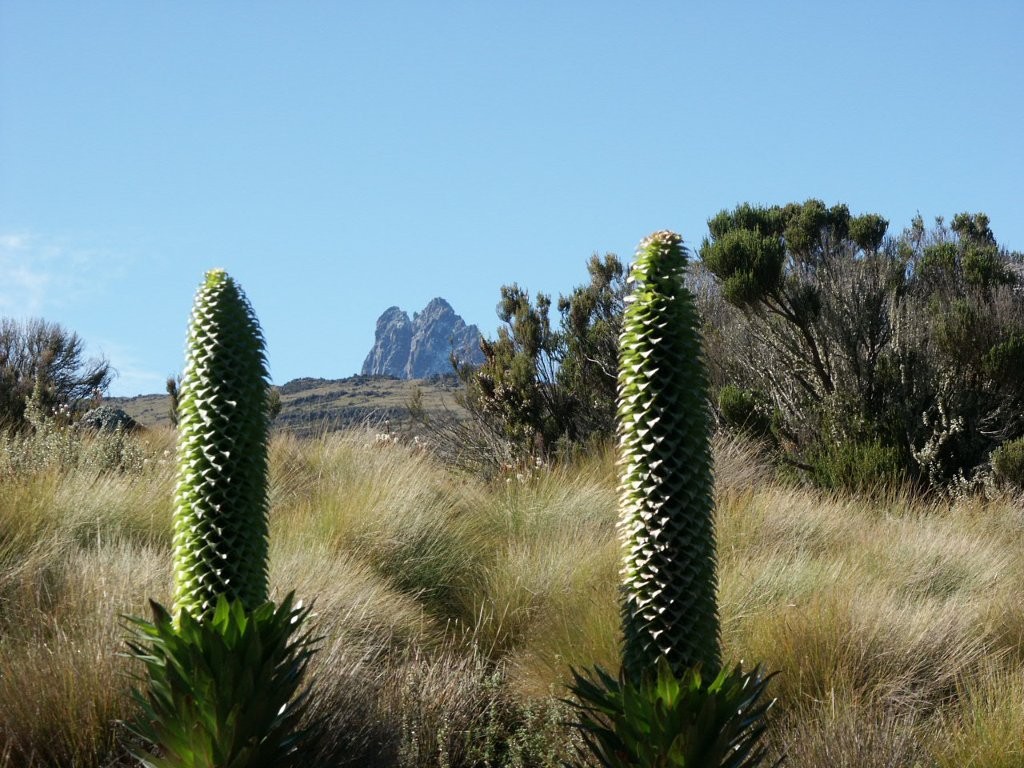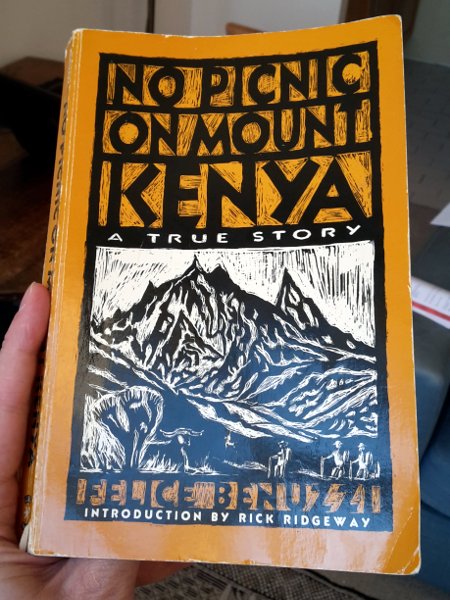With a drip feed of FIFA corruption allegations hitting the headlines more or less daily, I’ve decided to use this week’s blog post as an opportunity to highlight a case of sporting integrity beyond the call of duty. OK, it happened in 1943, but it’s too remarkable to ignore.
During the Second World War an Italian mountaineer, Felice Benuzzi, found himself incarcerated as a prisoner-of-war in a British prison camp at the foot of Mt Kenya. He knew escape was possible, but the chance of reaching freedom without being recaptured was remote. The nearest neutral territory was Portuguese East Africa – now Mozambique – over 1000km away, across territory where a white-faced beggar stood out like Sepp Blatter in an identity parade.

Many people would be downcast at the prospect of spending some of the best years of their life languishing in prison, but not Felice. He knew it was unlikely he would ever find himself so close to one of Africa’s most iconic mountains again, so with total freedom improbable he focused his mind on the next best thing: a two week mountaineering holiday.
He had nothing better to do with his time, so he spent the next six months planning his trip. Working in secrecy, he recruited a pair of accomplices, Giuàn Balleto and Enzo Barsotti, hoarded food and set about making climbing equipment out of whatever materials were available. They found some old bits of metal on a scrapped car which had been dumped on a rubbish heap outside camp. There was no shortage of barbed wire, so this was used to make a set of crampons, and an ice axe was fashioned from an old hammer.
They resisted the temptation of getting out of camp by bribing one of their African guards because they considered it a dishonourable means of escape. Instead they concealed themselves in the vegetable patch while on gardening duty, and escaped at nightfall. It took them three days to climb sufficiently high up Mt Kenya to consider themselves safe from capture. They travelled only at night and hid in the bush during daylight.
From then on their biggest dangers were not British soldiers, but wild animals and starvation. They were particularly concerned about rhinos and leopards, though elephants were also worth worrying about.
They climbed through dense bamboo forest by following the course of a mountain stream. This meant scrambling up waterfalls and over boulders. On the heath-clad moorlands above the forest they endured a tropical rainstorm and altitude sickness, but nine days after escaping from prison they set up their base camp beneath Batian, the highest of Mt Kenya’s many summits.
Theirs was far from being the first ascent of Mt Kenya, and wasn’t even the first Italian ascent, but it might as well have been. As Felice said in his book No Picnic on Mount Kenya:
“Every step led to new discoveries … It was as though we were living at the beginning of time, before men had begun to give names to things.”
Mt Kenya’s highest and third-highest peaks Batian and Pt Lenana were climbed as early as 1899 in an expedition led by the splendidly-named Halford Mackinder. Its second peak Nelion was climbed in 1929 by Eric Shipton and Percy Wyn Harris. The following year Shipton and Bill Tilman climbed Batian, Point Peter, Dutton Peak, Sendeyo, Point Piggot and Midget Peak. Five more ascents of Batian were made in the 1930s, one by the Italian Piero Ghiglione in 1937. There were even two huts on the mountain, including one at 4800m beneath the south ridge of Pt Lenana.

By 1943 Mt Kenya was well explored, but not by Felice and his two companions. They had no idea about any of this history. The only peak whose name they knew was Batian. Their entire knowledge of the mountain came from a magazine article about its flora and fauna, a few words by a priest regarding a cross that had supposedly been erected on the summit of Pt Lenana, and what they had been able to study through binoculars from prison. Their route map of Batian was the label of a tin of Kenylon’s meat and vegetables, which happened to have a line drawing of Mt Kenya on it.
Had they known Shipton and Tilman had dismissed the northwest ridge of Batian as hopeless in summer, Felice and Giuàn may not have attempted it in winter. But while Enzo guarded their base camp they gave it a go in their barbed-wire crampons, and managed to get a fair way up before a snowstorm caused them to retreat.
Not to be defeated, they returned to their base camp and rested for a day before climbing Mt Kenya’s third peak, Pt Lenana, which has the advantage of being a walk-up. Here they left an Italian flag they had stitched together in prison, and a message in a bottle, describing their adventure.
From the summit they glimpsed the hut, around 600m higher than their base camp, that was to cause them to search their consciences the following day. They were tired and hungry on a remote mountaintop, and down to their last few scraps of food. The hut offered them the possibility of salvation: a safe place to shelter from the tropical rainstorms that had drenched them frequently. They weren’t to know their Italian flag would be found by a group of British tourists only a week later; as far as they were concerned they were alone. They might even find food inside, and this would give them a chance to launch another attack on Batian, this time from a hut which surely stood beneath the standard route.
Call me naive, but you would think you can drop a few scruples during wartime. For example, in combat situations shooting people is considered OK, while in ordinary circumstances it tends to be frowned upon. In the process of incarcerating them inside a prison camp, we Brits happily robbed them of everything they owned, not least their freedom, in a similar way that Strictly Come Dancing frequently robs sportsmen of their dignity.

It was Enzo who proposed occupying the hut when they told him about it after returning from Pt Lenana. Felice described their main reasons for rejecting the idea in his book:
“We did not know whether the hut would be locked up and to open it by means of violence would be little less than burglary. If we had found stores we could not have paid for them as all we had between us was only ten shillings in cash. We could of course have paid the balance through the Pay Office by a long and complicated process but it would have looked little better than glorified theft.”
And then of course:
“We had ‘hoisted the flag of our despised country despite British barbed wire’ as we had stated in the message left in the bottle. It would be contradictory and definitely unsporting to use a British hut now.”
Foodless and starving, it took them three days to descend Mt Kenya. They sneaked across the lowlands during the night and crawled back into the prison vegetable garden, where they concealed themselves until daylight. The following day they nonchalantly mingled with a group of prisoners who were tending the garden. The guards didn’t bat an eyelid and they had broken back into prison. Not only that, but they had climbed Mt Kenya using homemade equipment, avoiding British soldiers, rhinos and starvation in the process.
Even more importantly they were honest men who managed to uphold their integrity in the face of overwhelming barriers. I take my hat off to all of them. Sepp Blatter and corrupt officials across the world can roast in hell, and prod each other with homemade tridents entwined with barbed wire for the rest of eternity.
When the war ended Felice Benuzzi wrote No Picnic on Mount Kenya, a mountaineering classic.
I’ve spent a bit of time in Italy over the last few months. I love the mountains of Abruzzo and have found Italians very welcoming. I’ve even been learning some Italian in the evenings at International House here in London. I would like to pay some of that back with this salute to the integrity of Italian mountaineers.
Oh, and sorry about the war.







Mark – you need to stop all these interesting stories as they cause me to buy more books that I can’t seem to find the time to read!
Haha, that’s OK Robert, you will be able to read it on your next expedition. This one may not be as appropriate for a Cho Oyu climb than Herbert Tichy, but it’s a little bit cheaper!
Great article, Mark. Loved the part about their route map being the label from a food tin. It brought back fond memories of one of my first independent walks in the Lake District, when a friend and I went to climb Scafell. Being cocky teenagers we decided we didn’t need a map (i.e. we were too stingy to buy one) and could just follow everyone else. On reaching the summit my friend produced a scenic tea-towel of Lakes which his mum had wrapped his sandwiches in, to plan an alternative route in descent. I’m pleased to learn that we aren’t the only two people in history who have relied on ‘artist’s impressions’ for navigational purposes! 🙂